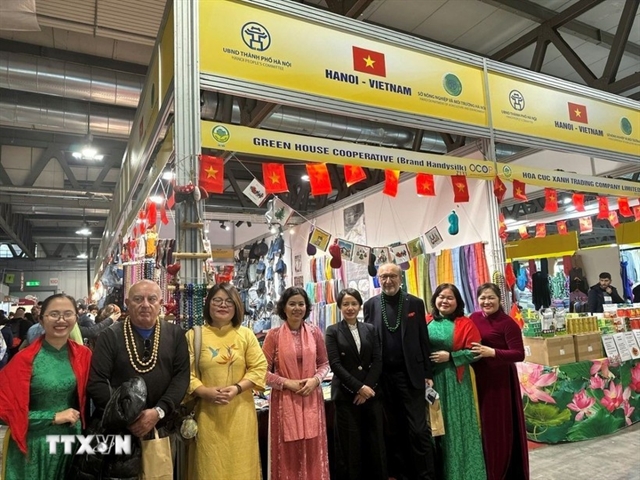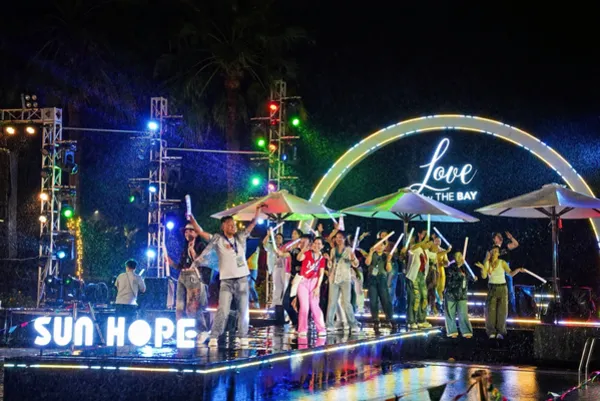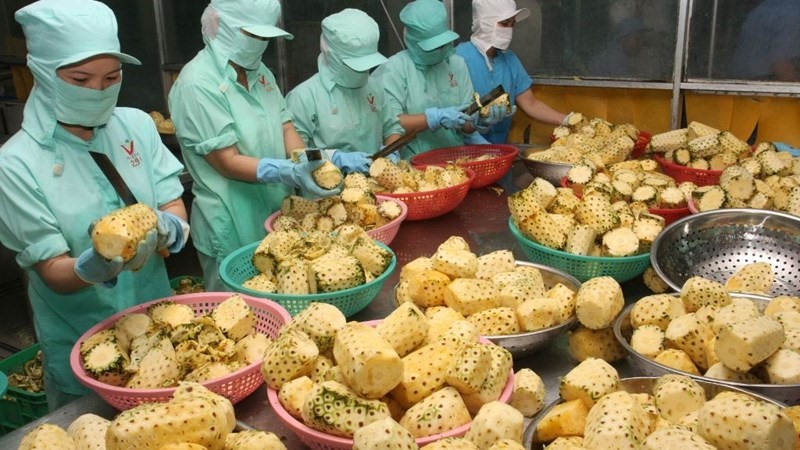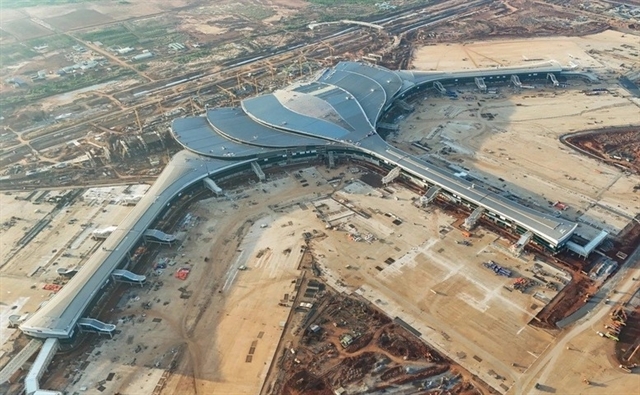 Economy
Economy

In December the CPV Food Complex was inaugurated at the Becamex Bình Phước Industrial Zone.

|
Analysts said food processing has for years been considered an important sector with great potential for development. — Photo tapchitaichinh.vn
Compiled by Thiên Lý
In December the CPV Food Complex was inaugurated at the Becamex Bình Phước Industrial Zone.
Costing $250 million and equipped with advanced technologies, the complex, the biggest of its kind in Southeast Asia, can produce 100 million chickens a year for the domestic market and exporting to Japan, the EU, Asia, and the Middle East starting in 2023.
In the first phase, from 2019-2023, its owner, Thai company CP plans to develop a closed-chain production line to breed, raise and slaughter chicken as well as process final products.
The complex includes an animal feed plant with an annual capacity of 300,000 tonnes and five farms producing breeding chicken with a capacity of 53.6 million chicks a year
Elsewhere, in September a fresh fruit and herb processing plant began operation in Vân Hồ District in the northern mountainous province of Sơn La.
The VNĐ1.2 trillion factory built by the TH Group has an annual capacity of 300 tonnes of fruits, vegetables and herbs in its first phase.
The company expects to invest another VNĐ3.5 trillion in its second phase in 2025.
Analysts said food processing has for years been considered an important sector with great potential for development.
In 2020 alone 16 processing projects were developed with a combined investment of VNĐ17 trillion, taking the number in the last four years to 67.
Experts said that the agricultural sector now finds it necessary to invest in the processing industry to fully tap its advantages, especially following the Covid-19 outbreak.
Phan thông, chairman of Phúc Sinh Corporation, one of the country’s leading pepper and coffee production and trading companies, said a few months ago the company launched K-Pepper, a freeze-drying plant in HCMC.
Its modern technology is said to keep spices’ pungency and natural colours longer.
Its products have been granted international certificates such as Rainforest Alliance, meaning they meet comprehensive environmental, social and economic standards for sustainability.
Thanks to this, they can be exported to many choosy overseas markets, fetching high added value, Sinh said.
The price of unprocessed pepper is only US$3 per kilogramme, but products made using freeze-dried technology fetch seven times higher prices, he said.
Đỗ Hà Nam, chairman of Intimex Group, said his company’s coffee is also processed using advanced technology and thus gets higher prices.
The use of technology also makes it easier for the company to sell its products since a modern information network helps buyers check product quality from a distance without even coming to Việt Nam, he said.
Lý Kim Chi, chairman of the HCMC Food and Foodstuff Association, said while many industries have been severely affected by the Covid-19 pandemic, the processed food sector has managed to grow strongly.
Vissan for example reported sales of canned foods doubled last year while revenues from frozen products rose by more than 20 per cent and from sterilised sausages by almost 20 per cent.
In 2021 the food processing industry is expected to grow further thanks to free trade agreements such as the Vietnam-EU FTA, the Comprehensive and Progressive Agreement for TransPacific Partnership and the UKVFTA and a revival in global as well as domestic demand for processed foods.
The financial services market will also further develop due to the presence of a number of foreign investors, while policies and mechanisms will be strengthened to meet the country’s integration requirements and FTA’s commitments.
These changes will result in a fair trading environment for all including the food industry, thus helping it develop.
How to grasp the opportunities
Đăng Phúc Nguyên, general secretary of the Việt Nam Fruits and Vegetables Association, said Vietnamese agro-products exported to major markets like the US, EU and Japan are not sold in their hinterlands but only in areas near coasts because they are not preserved properly.
He said enterprises should build modern factories for processing and preservation to ensure their products keep quality until they reach consumers.
Nguyễn Quốc Toàn, director of the Agro Processing and Market Development Authority, concurred saying in future developing the processing sector would be one of the most important tasks for the agricultural sector if it wants to revamp.
In future Vietnamese farm products will be exported to many countries, and shipping will take a long time, meaning they need to be processed and preserved well to ensure they retain their quality.
This requires Vietnamese enterprises to get modern processing and preservation technologies to meet international food safety standards.
Lý Kim Chi of HCN FFA stressed the need for developing a network of storage depots and cold storage warehouses, and said the Government should provide policy support through easy credit and tax breaks to encourage investment in this sector.
Doing so will help add value to Việt Nam’s processed agro products, Chi said.
Experts consider extensive investment in processing and preservation technologies a requirement for the agriculture sector to achieve its goal of having processed products accounting for 30 per cent of exports.
Modern processing plants should be set up close to areas that supply their raw materials, they added.
City to have more retail space
HCMC will add 60,000 square metres of retail space this year with the reopening of Union Square in District 1 and the opening of the Sacar Shopping Mall in District 2, according to property services provider CO Richard Ellis (CBRE) Vietnam.
In the next five years, the city will have an extra 500,000sq.m of retail space, mostly in the eastern and downtown parts.
Catering, health and beauty services, supermarkets, fashion and accessories, and some other sectors are expected to have higher demand for space this year, including showrooms for cars, household appliances and luxury goods.
Due to the impact of the Covid-19 pandemic, the city saw almost no new supply added last year, and the retail market had an area of around one million square metres.
The office space segment continued to face difficulties due the pandemic, yet three new office buildings with a total area of more than 65,000sq.m were completed last year: the Friendship Tower, the UOA Tower and the Opal Tower.
HCMC currently has more than 1.4 million square metres of office space for lease.
In 2021 and 2022 it is expected to add more than 15,000sq.m at six new buildings including Cobi Tower, The Graces and Saigon First House.
Large retail models will dominate the market, especially in the form of destination and lifestyle malls in urban townships.
Looking forward to 2030 CBRE said many street shops in the central business district would be styled up since appearance would become an important factor in attracting shoppers.
The Thủ Thiêm new urban area would become a new entertainment and shopping hub by that time, it said.
CBRE said the HCM City retail market is shifting gradually from small shopping malls to destination malls which focus on millennials and offer them experience-based shopping.
These require the presence of anchor tenants who are usually large and draw a high level of foot traffic. Anchor tenants in HCM City’s most popular shopping malls have traditionally been cinemas and supermarkets, but now fashion stores are a new type of anchor tenant that has taken over 1,000sq.m of net leased area, ith Zara, H&M and Uniqlo being the latest.
To do this, the Government should have concrete support policies given to the food processing industry, and create a legal framework for developing large-scale raw materials areas that can supply standardised raw materials for the processing factories.
In the interim, Việt Nam’s small and medium-sized enterprises may cooperate with foreign-invested companies in building processing facilities through which they can accumulate capital, knowledge and experience in this area.




